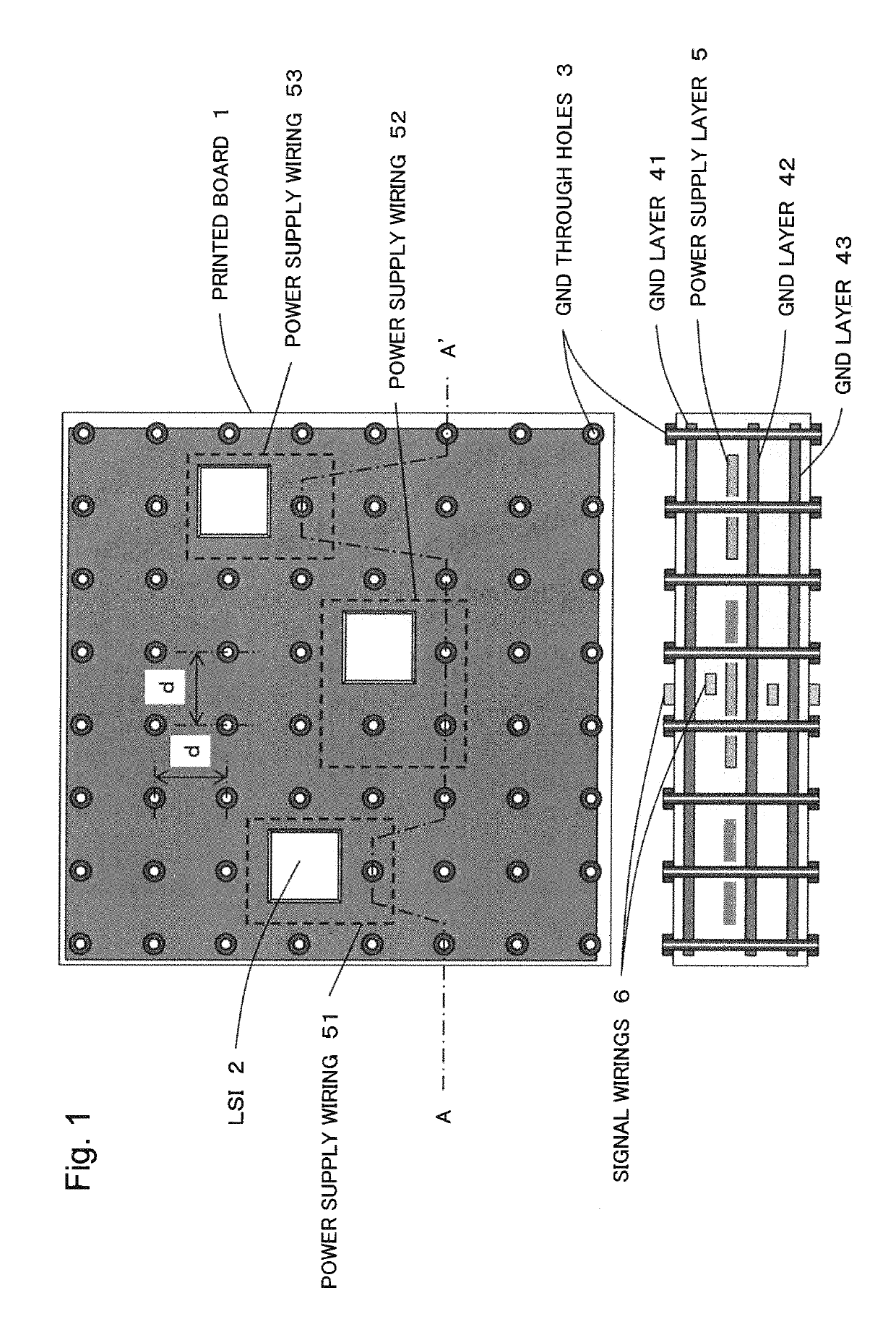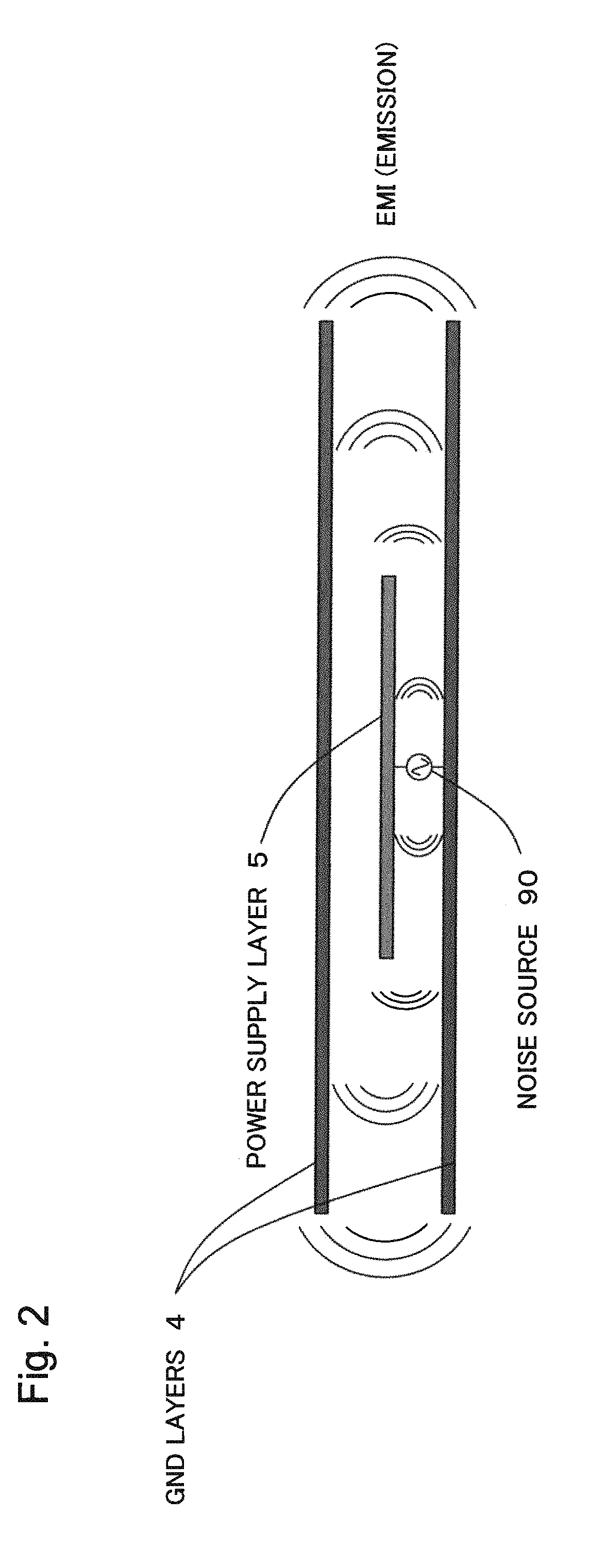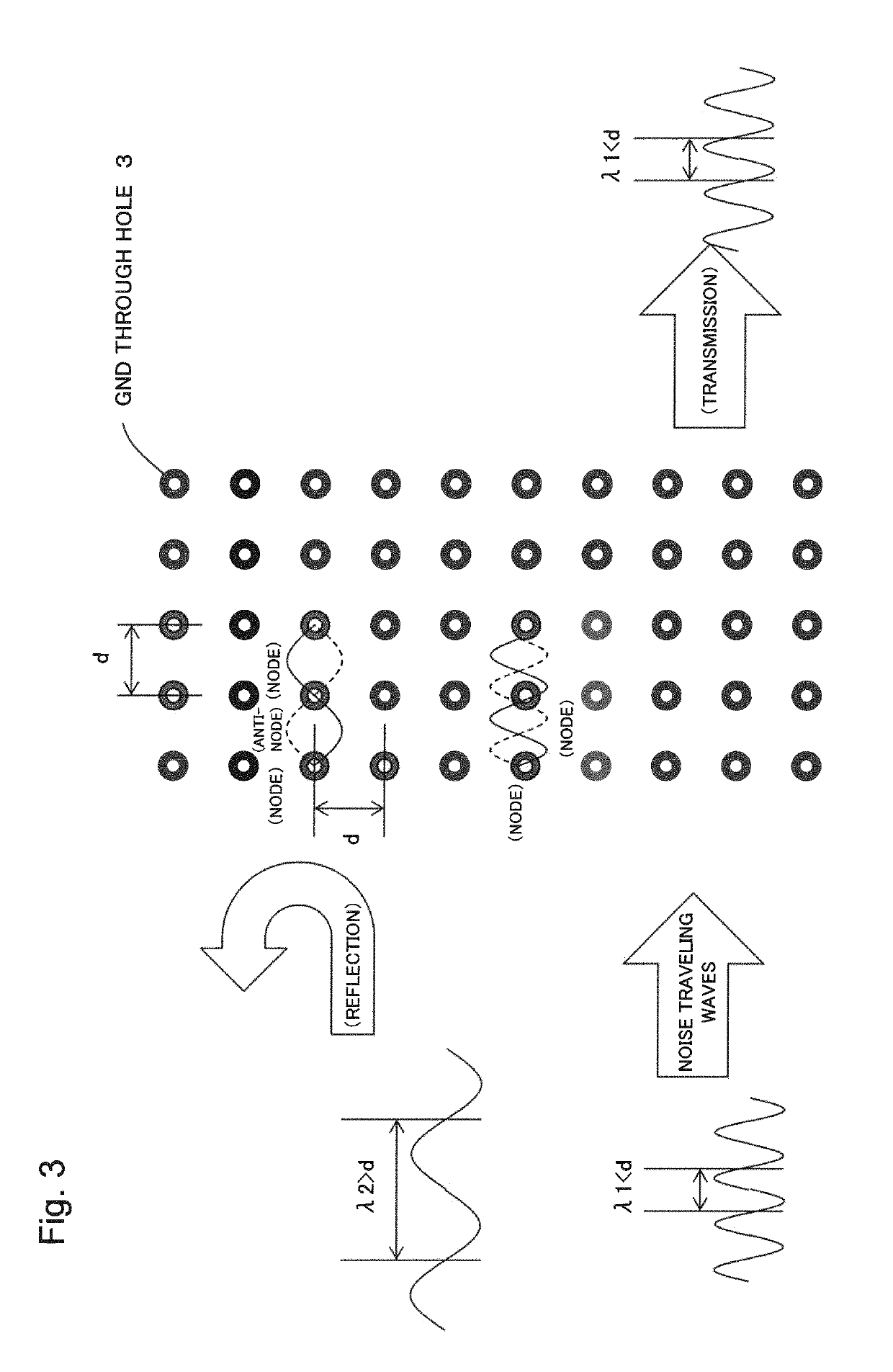Printed board
a printed board and board body technology, applied in the field of printed boards, can solve the problems of increasing the speed of signals or equipment sizes, difficult to conform to emi, and higher frequency of power supply noise, and achieve the effect of suppressing emi emissions
- Summary
- Abstract
- Description
- Claims
- Application Information
AI Technical Summary
Benefits of technology
Problems solved by technology
Method used
Image
Examples
first example embodiment
[0036]The first example embodiment of the present invention will be described using FIG. 1 to FIG. 5.
(Description of Configurations)
[0037]FIG. 1 is the plan view and the cross-sectional view illustrating a printed board 1 of the first example embodiment of the present invention. The cross-sectional view illustrates a cross section taken along a dashed-dotted line A-A′ in the plan view. For easily understandable, the cross section is presented not by cutting along a straight line, but by taken along a polygonal line so as to pass positions containing the power supply layers. The printed board 1 is a multilayer printed board in which, by putting insulating layers therebetween, power supply layers 5 and signal wirings 6 are formed.
[0038]On at least directly under a component surface (in FIG. 1, one surface side on which LSI 2 is disposed) and directly over a solder surface (the opposite surface side opposite to the component side), GND layers 41, 42, 43 are formed as grounds that are f...
second example embodiment
[0054]In the conditions analyzed in FIG. 7, although the only single circuit of the GND through holes 3 is arranged along the periphery of the board, the EMI emissions are generated in the outside of the board 1. An effect for preventing to travel the electromagnetic waves is provided by not arranging the GND through holes 3 on the entire board surface but radially arranging in double circuits, triple circuits, or more thereof on the board.
[0055]FIG. 11 and FIG. 12 are the analysis results of the electric field intensities in the inside and outside of the printed board 1 when the double circuits of the GND through holes 3 are arranged, and the triple circuits thereof are arranged, respectively. In both FIGS. 11 and 12, the EMI emissions to the outside of the board are not observed. FIG. 13 is the results of analyzing the relationship between the frequencies and the electric field intensities measured by the probe, which is positioned at the observation point outside the board, conce...
third example embodiment
[0057]FIG. 14 is the plan view illustrating the third example embodiment of the present invention and the cross-sectional view taken along the B-B′ thereof. In the B-B′ cross sectional view, the IC is omitted. In the first and second example embodiments, the propagations of the power supply noise to the outside of the printed board have been suppressed. In the present example embodiment, the propagations of the power supply noise to circumference of the power supply layers in the board are suppressed.
[0058]In the present example embodiment, the power supply layer, i.e., a power feeding wiring for the IC 54, is in a lower layer than the IC 21 and runs across the printed board 1 along the vertical direction of the plan view. The GND layer 401 and GND layer 402 are formed above and below the power feeding wiring for the IC 54, respectively, and the GND through holes 3 are disposed only around the power feeding wiring for the IC 54, which is the source of the power supply noise. In FIG....
PUM
 Login to View More
Login to View More Abstract
Description
Claims
Application Information
 Login to View More
Login to View More - R&D
- Intellectual Property
- Life Sciences
- Materials
- Tech Scout
- Unparalleled Data Quality
- Higher Quality Content
- 60% Fewer Hallucinations
Browse by: Latest US Patents, China's latest patents, Technical Efficacy Thesaurus, Application Domain, Technology Topic, Popular Technical Reports.
© 2025 PatSnap. All rights reserved.Legal|Privacy policy|Modern Slavery Act Transparency Statement|Sitemap|About US| Contact US: help@patsnap.com



